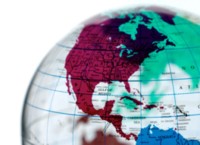Tomorrow's Weather - Warm and Getting Warmer
 The first decade of the new millennium was the warmest on record
The first decade of the new millennium was the warmest on recordaccording to the United Nations weather monitoring agency the
World Meteorological Organization (
target=”_blank”>WMO).
“The decade of the 2000s was warmer than the decade of the
1990s, which in turn was warmer than the 1980s,” said Omar Baddour,
Chief of the Data Management Application Divisions at WMO.
The new findings are part of the WMO Statement on the Status of
the Global Climate, an annual survey by the agency about the
weather and climate change.
The decade between 2000 and 2009 included one of the
warmest years on record - last year, which was the fifth hottest
year since records began.
“The current nominal ranking of 2009 places it as the
fifth-warmest year since the beginning of instrumental climate
records [in 1850],” Mr. Baddour said yesterday.
Last year also brought extreme weather, ranging from devastating
droughts to severe floods, extreme heat waves and cold waves, in
many parts of the world, according to the newly released WMO
Statement on the Status of the Global Climate.
The Southern Hemisphere was particularly warmer than the
long-term average, while the Northern Hemisphere cooled at the end
of 2009 with heavy snowfall in Europe, North America and northern
Asia.

target=”_blank”>State of the Climate Global Analysis March
2010 - Global Highlights
- The combined global land and ocean average surface
temperature for March 2010 was the warmest on record at 13.5°C
(56.3°F), which is 0.77°C (1.39°F) above the 20th
century average of 12.7°C (54.9°F). This was also the
34th consecutive March with global land and ocean
temperatures above the 20th century average. - The March worldwide land surface temperature was
1.36°C (2.45°F) above the 20th century average of 5.0°C
(40.8°F)-the fourth warmest on record. - The worldwide ocean surface temperature was 0.56°C
(1.01°F) above the 20th century average of 15.9°C
(60.7°F) and the warmest March on record. - For the year-to-date, the global combined land
and ocean surface temperature of 13.0°C (55.3°F) was the fourth
warmest January-March period. This value is 0.66°C (1.19°F) above
the 20th century average. - The combined global land and ocean surface
temperature anomaly for March 2010 was 0.77°C (1.39°F) above the
20th century average, resulting in the warmest March
since records began in 1880. - The previous record was set in 2002 when
temperatures were 0.74°C (1.33°F) above the 20th century
average. - Sea surface temperatures (SST) during March 2010
were warmer than average across much of the world’s oceans, with
the cooler-than-average conditions across the higher-latitude
southern oceans, across parts of the northern Pacific Ocean, and
along the western coast of South America
target=”_blank”>
Why are Anomolies Important?
In climate change studies, temperature
anomalies are more important than absolute
temperature.
A temperature anomaly is the difference from an
average, or baseline, temperature. The baseline
temperature is typically computed by averaging 30 or more years of
temperature data.
A positive
anomaly indicates the observed temperature was
negative anomaly indicates the
observed temperature was
Source: www.un.org

